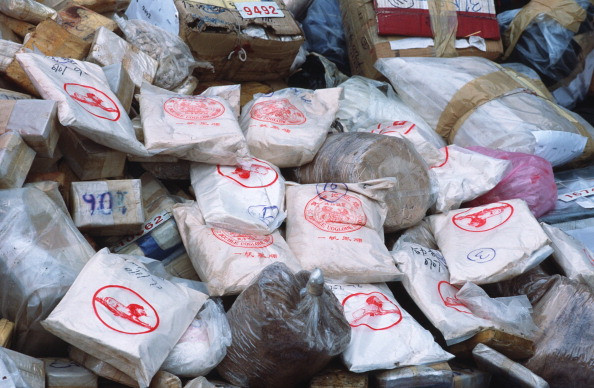US opioid epidemic: Heroin use booms five-fold in a decade
The increase was much greater among white than non-white people.
Five times more people in the US were using heroin in 2012-13 compared with 2001-02, which has been linked to dependency on prescription painkillers and social acceptance of heroin use among suburban white people.
The greatest surge was among white people, finds a study published in the journal JAMA Psychiatry. In 2001-02, heroin use was at a similar level among white and non-white people.
Use and dependency surged across the board, but the five-fold increase in use among white people has been particularly large. Heroin use among non-white people rose three-fold over the 11 years of the study.
A total of 0.34% of white people used heroin in the US in 2001-02, rising to 1.9% in 2012-13. Among non-white people, the figure rose from 0.32% to 1.1%.
Heroin use is associated with addiction, death, increased risk of infectious diseases and psychological problems. About 91 Americans die every day from an opioid overdose, according to the US's Centers for Disease Control and Prevention. UN figures estimate that worldwide 26 million to 36 million people abuse opioid drugs.
The study draws attention to the long-term pattern of change, but more research is needed to investigate the causes of the trend, Jennifer Scott, a researcher in drug and medicines use at the University of Bath, told IBTimes UK. Compared with the UK, heroin use in the US is much more of a problem.
"If you look at the data we've got in the UK – the Crime Survey for England and Wales and the NDTMS – overall in the UK we've seen a bit of a downward trend in opiate and heroin use."
"However, what we have seen is more people presenting to drug treatment centres with addiction to prescription medicines. It's still not common but it's gone up."
More socially acceptable
The US study was based on a survey of nearly 80,000 US residents. The data also reflected a link between non-prescription opioid use and later heroin use and dependency was reflected in the data.
Non-prescription use of opioids was increasing among white people who then went on to use heroin. This went up from 36% of users in 2001-02 to 53% in 2012-13.

"Because the effects of heroin seem so similar to widely available prescription opioids, heroin use appears to have become more socially acceptable among suburban and rural whites," said study author Silvia Martins of Colombia University in a statement.
Previous research shows that about 80% of heroin users had previously had a dependence on prescription painkillers. The link between non-medical use of prescription opioid painkillers and transition to heroin is established in adults and also in high school students in the US, according to a recent study.
Suburban and rural users
This link between opioid dependency and heroin use partly explains the shifting demographics of heroin users, who are increasingly white and living in suburban or rural areas. Pharmaceutical companies have been required by the US Food and Drug Administration to take steps to reduce non-medical use of opioids by making them harder to crush and snort.
However, this may have had a knock-on effect in boosting heroin use, as former non-medical users of opioids struggle to access them and instead turn to illicit drugs for a similar high, the authors suggest.
"Our results underscore the need to expand educational programs on the harms related to heroin use and access to treatment in populations at increased risk," said Martins.
"Promising examples of prevention and intervention efforts include expansion of access to medication-assisted treatment – methadone, buprenorphine or injectable naltrexone – as well as educational campaigns in schools and community settings, and consistent use of prescription drug monitoring programs."
© Copyright IBTimes 2024. All rights reserved.







